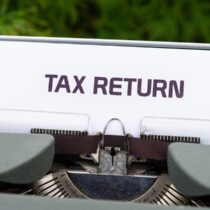
There are trillions of dollars being left behind in forgotten 401(k) plans in America. That is a lot of money! If you have had several jobs over the years, then you may have left behind your 401(k) when you changed employers. It can be hard to keep track of all of your retirement accounts, but it’s important to know where your money is. We cover how to locate your lost 401(k) and what you need to do next.
What is a 401(k) plan?
401(k)s are the one of the most popular retirement savings plans for Americans. 401(k) accounts are employer-sponsored which means that they are provided by your employer. They can be a fantastic retirement savings vehicle but because we often change jobs every few years, we have to decide what to do with the 401(k). Job transitions are busy times and 401(k)s are often forgotten.
When you change a job you can usually decide on one of four 401(k) options:
- Roll over the 401(k) into an individual retirement account (IRA).
- Roll over the old 401(k) into a new 401(k) account. You can only do this if it’s allowed by your new employer.
- Cash out the old 401(k)
- Leave the money in the previous employer’s 401(k) plan.
The easiest option is to leave the money in the previous employer’s 401(k) plan so this is often what people do. But many end up forgetting about them. As of May 2021, there were 24.3 million forgotten 401(k)s holding approximately $1.35 trillion in assets, according to the study by Capitalize. If you leave your 401(k)s behind with previous employers then it may be hard to locate them all when you retire. It’s best to keep track of your 401(k) funds so that you can plan for your retirement accordingly.
What happens if you lose your 401(k)?
If you lose your 401(k) then it’s important to take the steps below to locate it. According to a study by Capitalize, leaving behind a forgotten 401(k) account has the potential to cost an individual almost $700,000 in retirement savings in a lifetime. The sooner you locate your 401(k)s, the sooner you can consolidate them and have a clearer understanding of your retirement savings.
How do I find my lost 401(k) money from my old job?
- Find previous 401(k) statements: if you track down old statements then it makes it easier to know which 401(k) provider was managing the plan.. This can help you determine who you should contact to access your account.
- Contact your previous employers: The fastest way to find your old 401(k) accounts is to contact your previous employer. The HR department should have records of your 401(k). You usually just need to provide your name and social security and they can look you up in the system.
- Find 401(k) plan information through the Labor Department: Go to the Department of Labor’s website. Locate your previous employer’s Form 5500, and there should be an annual report showing employee benefit plans. This report should have the contact information and who the plan’s administrator was during your employment.
- Search database for unclaimed assets: You can search the National Registry of Unclaimed Retirement Benefits. You just need to enter your Social Security number and then it will display any unclaimed retirement funds that belong to you. This is a free service so it’s good to double-check even if you aren’t sure if you have unclaimed funds.
What should I do once I have located my lost 401(k)?
Once you have located your lost 401(k), you have three options:
- Leave the 401(k) where it is: You don’t have to move the money from your old 401(k). However, after you put in effort to locate it, it’s usually recommended to move your 401(k) to somewhere where you can keep track of it.
- Roll your old 401(k) into your new employer’s plan: If you roll all of your old 401(k)s into your new employer’s plan, then it will mean that all of your 401(k)s are in one place. You need to see if your new employer allows this before choosing this option. You will need to remember to move it if you do change employers again.
- Roll your old 401(k) into an IRA: The main benefit of this is that it’s tied to you rather than your employer. This will make it easier to keep track of your retirement funds in the future. If you don’t have an IRA, then you will need to set one up first before you roll your 401(k) into an IRA. The main downside is it may prevent you from doing a backdoor Roth strategy correctly
How do I roll my 401(k) to my new employer?
First, you must check that your new employer allows a 401(k) rollover. If they do, then you can choose between a direct or an indirect rollover.
– Direct rollover: A direct rollover is usually the easiest option. You fill out a form telling your old 401(k) plan to administer where to send the funds and they do all of the work for you.
– Indirect rollover: An indirect rollover is when your old 401(k) plan administrator writes you a check for the funds in your account and then you deposit that into your new 401(k) account. It’s important to do this within 60 days of cashing out your old account because if you don’t then the government considers it a distribution and will tax you on that money.
What happens if my former employer writes me a check for the lost 401(k) funds?
If your former employer writes you a check for your lost 401(k) then you have 60 days to deposit them into a qualified plan. If you don’t then the IRS could treat it as a distribution. This means that the money will be taxed as ordinary income and it may also trigger a 10% early withdrawal penalty if you’re not yet 59½. It’s important to talk to a financial advisor who can advise you on where you should put that money.
What’s the “lost 401(k)” effect on previous employers?
Many people don’t realize that lost 401(k)s also have a big effect on the previous employers. Former employers pay more in annual administrative and record keeping fees because many of these fees are levied on a “per participant” basis. They also take on an increased legal risk and it uses valuable HR time. Under ERISA requirements; a previous employer must still communicate about the 401(k) with the former employee or they could be at risk of breaching their fiduciary duty. Lost 401(k)s are a problem for both former employees and former employers.
How do I know if I have an unclaimed 401(k)?
If you want to know if you have an unclaimed 401(k) then you can search databases with your social security number. These databases include the National Registry of Unclaimed Retirement Benefits or the U.S. Department of Labor’s Abandoned Plan Search.

















Comments are closed.